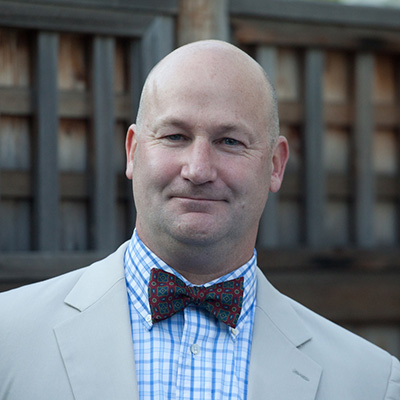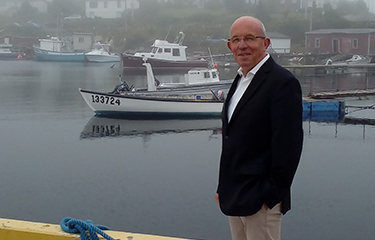The seafood sector has seen an explosion of innovation development over the last 20 years to address some of the industry’s biggest environmental and labor challenges. Certification, fishery improvement projects, benchmarking, audits and assessments, ratings, supply chain and traceability tools, and pre-competitive collaborations are all innovations developed to help seafood become more sustainable and more competitive in global protein markets.
Although the sector and its partners have worked to develop innovation, the seafood industry has not seen widespread adoption of those innovations across seafood supply chains. While this is a problem for the seafood industry – leaving it exposed to supply chain and reputational risk – it is not a problem unique to the industry.
“The Chasm” is widely accepted innovation adoption theory developed by Geoffrey Moore to help business understand the market dynamics around product category innovation adoption (as opposed to product innovation). As explained in “Seafood2030’s The Chasm: Understanding Innovation Adoption and Diffusion, Crossing the Chasm makes the case for a distinct difference between the adoption drivers for the early part of the marketplace, the innovators and early adopters, and the adoption drivers for the rest of the marketplace. Innovators and early adopters tend to adopt innovation that fits with their vision for their company and the future. The rest of the marketplace tends to be more pragmatic or they adopt only when necessary – when their business mission critical business strategy is broken.
The Sustainable Fisheries Partnership’s supplier roundtables are one of the leading efforts in seafood focused on “Crossing the Chasm” and engaging the broader industry. The SFP roundtable model aligns with innovation adoption theory like The Chasm by recognizing and addressing the different motivations and needs of the majority of seafood companies trying to incorporate more sustainable practices into their business.
In a four-part series, Seafood2030 and SeafoodSource interviewed key players in SFP’s supplier roundtables to learn more about how they are pushing for wider adoption of sustainable practices in the global seafood industry. Part three features Jean-Louis Meuric, the former CEO of Davigel, a French broadline foodservice supplier that was sold by Nestlé to U.K.-based Brakes in 2015, which was subsequently taken over by Sysco in 2016. Meuric is a current board chair of the Sustainable Fisheries Partnership.
Part one of the "Crossing the Chasm" series featured Sarah Hussey, the fisheries manager for Sea Farms Ltd. and the chair of Sustainable Fisheries Partnership's global squid roundtable. Part two featured Santiago Alvarez, the CEO of Miami, Florida, U.S.A. based seafood supplier Alfa Gamma Group and the chair of SFP's global mahi supply chain roundtable.
SeafoodSource: What brought you to the supplier roundtables?
Meuric: Before retiring, I was the purchasing manager at Davigel SAS, which was owned by Nestlé at the time, so I spent most of my time working with fish at the international level. I spent a lot of time traveling worldwide finding new sources of fish. I was asked to develop the sustainable fisheries policy in Davigel and in Nestlé, which is how I started working with the Sustainable Fisheries Partnership.
At the beginning of the story with SFP, we were more involved with fishery improvement projects (FIPs). FIPs are very focused on specific fisheries working with a limited number of stakeholders and specifically, producers. We had a very limited view on everything. Supplier roundtables are a very good way to enter the problem. It’s a broader view on the questions.
SeafoodSource: There are now more industry-led precompetitive collaborations develop in seafood, but the roundtables were one of the first platforms to let industry lead the strategy. Why is that important?
Meuric: The roundtables at the beginning were a forum for different FIPs to get together and give updates on their progress. If we are all working on similar efforts, then how can we work together more efficiently across seafood sectors? The SRs offer that approach.
FIPs at the beginning were all NGO led and now many are industry led. It was obvious that fishers and supply chain actors know the most effective ways to make change in their own practices, since they are the experts. This natural evolution is happening with the SRs, which have industry chairs and middle of the supply chain actors embracing this collaborative model.
Ultimately, industry needs to lead industry as they need to be the true stewards of the resources given their business viability depends on the raw materials from fishery and aquaculture sources. SRs provide the middle of the supply chain with the opportunity to lead on sustainability efforts and demonstrate the actions of SR participants to stakeholders.
SeafoodSource: How do the roundtables help a company address sustainability and supply-chain challenges?
Meuric: It’s simple for me because, if you begin with a FIP, you begin with the smaller part of the problem. If you work through a supplier roundtable, you can see the point very globally. And on top of that, you are working with all the companies which maybe you didn’t know before, and it’s very important that first you get all necessary information to go further into more specific policy needs in a fishery.
When you work with a supplier roundtable, you better know the other companies you are working with. The different companies know each other, rather than to do that from zero. And you can have more information regarding the global situation of the category of fisheries. For example, you can work on an entire sector globally, worldwide, and identify which fisheries specifically have to be improved (in terms of sustainability) and get all this information through the supplier roundtable.
I personally wanted to create a FIP on the winter skate in New England and it was really very, very difficult. If we had something before, if we knew the other companies that were engaged in that fishery and so on, I think it would be far, far easier to develop a new FIP. There is a process that can be followed.
SeafoodSource: How have the roundtables evolved to address new and emerging opportunities, challenges, and obstacles?
Meuric: I think we have seen the roundtables grow to tackle bigger issues outside of FIPs altogether. So now it’s not so much looking at the individual FIPs anymore but the big problems that face all of the FIPs that we can work on together, like IUU fishing, wildlife bycatch, and how to organize improvements in small-scale fisheries.
With all of these prevalent issues, the problems are not limited to one fishery. For example, the problem with IUU fishing is not limited to a specific fishery, it’s unfortunately true for most of them. You have a lot of common points for any fishery, wherever they are located worldwide. If you are thinking about one specific fishery, you can’t have global knowledge of the situation.
SeafoodSource: How do you think it's possible to engage more seafood companies, beyond the innovators and early adopters, in sustainable practices?
Meuric: My feeling, which has always been my feeling, is that you can’t push companies to be involved in such policies only by saying “you have to do that.” I think companies have to find an advantage, a competitive advantage to do that. When I was at Davigel, we were the only ones in our sector to develop a real sustainable fishery policy in France. And we wanted to show to our customers that apart from what everyone was saying, we were really working on improving the situation in the different fisheries we were working with.
And that’s why we were very much interested in working with the tools that SFP was providing us to back up our sustainability claims. [Seafood] Metrics, for example. And from Metrics, at that time, we had built key performance indicators, and through these key performance indicators, we were able to show that globally, year after year, the situation in terms of sustainability of the different fisheries we were working with, had been improving. Because we had something which was objective with figures. I am in favor of speaking, and developing ideas, but you also have to give numbers. Another example is the Ocean Disclosure Project, because this is kind of a window which is open to everybody which shows what you are really doing and where you can put the results of the KPIs.
Photo courtesy of Sustainable Fisheries Partnership







